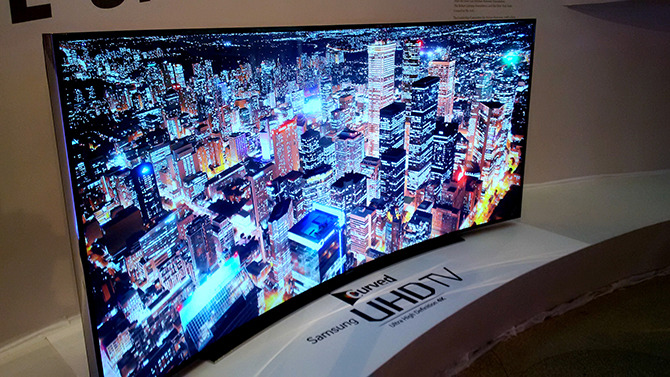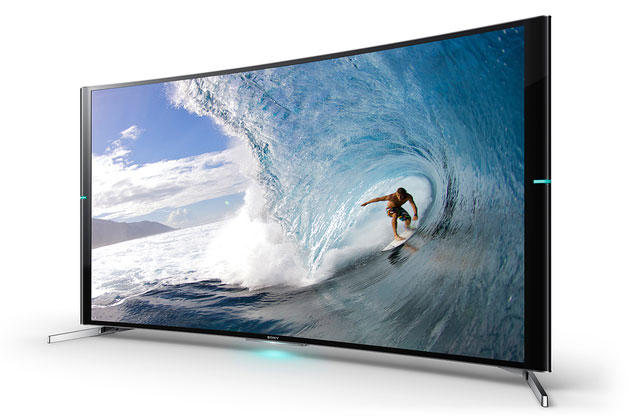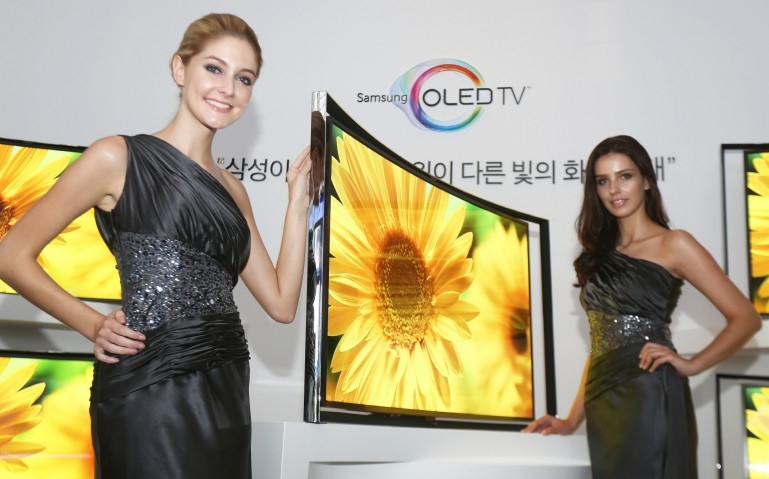Televisions have long become almost the main device of any home. There is practically no question for consumers - is there any point in buying this technical subject? And what really excites many is the question: which TV is better - curved or straight?
When it comes to choosing a new TV, people, as a rule, do not fully understand what they want to buy, and even more difficult to explain their preferences to others. The vast majority of modern TVs have flat screens, and conventional picture tubes are in the minority.

Content
Key Specifications
Without understanding the basic characteristics, it is impossible to evaluate the device and make the right decision. In curved and direct TVs, the indicators will differ, but both devices should be considered through the prism of such determining parameters:
- Brightness. To date, all televisions are available with sufficient indicators of this characteristic. In addition, in all devices it can be adjusted.
- Resolution. This value determines the ratio of the number of matrix elements per unit area horizontally and vertically. The higher the pixel rate, the better the image. The ideal picture quality on the screen is obtained only if this value completely coincides between the video signal and the monitor.
- Contrast. This characteristic indicates the difference in brightness in different parts of the screen, if you start from the brightest and darkest. It is divided into static and dynamic differences in the characteristics of different parts of the image.
- Viewing angle. This is an indicator of the maximum angle to the plane of the screen at which the image is not distorted. Normal are considered indicators - 175-178 degrees vertically and horizontally.
- Response time. This is the time the pixel state changed. The shorter this time, the more distinct the picture will be and less blurry.
- Connectivity options. The TV should have a sufficient number of connectors and their location should be convenient so that the consumer can connect everything that he would not want to the device (camera, flash drive, headphones, antenna, home theater, satellite receiver and more).
- Screen diagonal. This parameter is measured in inches. You need to choose a diagonal based on the distance at which viewing will take place. The optimal distance should be 3-4 screen diagonals.
Of the above, greater attention should be given primarily to resolution.
Features of Curved TVs
 The idea of concave monitors is far from a modern technology novelty. They have long been used in large format for showing films in theaters and are designed to solve such problems:
The idea of concave monitors is far from a modern technology novelty. They have long been used in large format for showing films in theaters and are designed to solve such problems:
- This type of screen transfers the image from the projector more correctly.
- It increases the radius of perception for viewers who sit close enough.
- It allows you to plunge into what is happening, because a person is located as if under a dome.
On a large canvas, this, of course, is obvious. But the characteristic features are inherent in not very large home curved TVs.
Deep dive
To feel the big difference in this matter between a direct and curved TV, you need the second to have at least a diagonal of 55 inches, and the viewer to be at a distance of 1.7 m from it. With such a diagonal, a curved plane will cover a larger area of the field of view.And it can deeply plunge into the atmosphere of what is happening on the screen.
In addition, curved television panels have another clear plus - the combination of high resolution in 4K Ultra HD. This innovative solution, of course, will still prove itself in the future, therefore such devices "for growth" are very promising.
Contrast and viewing angles
The concave screen is able to make up for the decrease in contrast in the sides of the monitor if a person sits at a very close distance to the device. In a higher format, the quality of spectator perception is improved in terms of contrast and smoothing of corners on the sides.

If the whole company will watch TV. While only one user has the opportunity to sit in the best central place, various experiments show that there are not enough comfortable points for viewing in the case of both direct and concave screens. If a person leaves the comfortable viewing area, then all the declared benefits of a concave display simply disappear.
Optical distortion
This is a very controversial issue. The sensor sensors of the matrix responsible for focusing the video camera are located on the entire plane, therefore, the video they shot is initially positioned for viewing on a flat surface. And if you use a curved surface for the show, then the director’s original idea will simply be distorted. In this matter, concave models will clearly lose by direct. And according to this indicator, it does not seem that the screen of a curved TV is better.
Reflection Reduction
Light rays from third-party sources are constantly falling on the monitor. And with a curvature of the screen plane, the angle of refraction of these rays changes, which allows to reduce glare on the screen. It is clearly visible in rooms with bright light. And the further the user sits from the screen, the more the intensity of the glow in the monitor of foreign objects will decrease.
Visual increase
Such a concept really takes place. The screen may seem larger than it actually is, but again it all depends on the distance at which the consumer is from the monitor. The farther the viewer moves away from the screen, the visually increased perception of the width will decrease. So this advantage is also quite relative.

Advantages and disadvantages
Thinking about which TV is better - curved or straight, you should pay attention to such advantages of concave screens in comparison with flat LCDs:
- good reflection of glare;
- increased visual perception of the screen;
- one user, occupying a comfortable zone, can get extended viewing angles and improved contrast.
But you can not ignore the following disadvantages:
- group viewing worsens viewing angles and contrast indicators for those who are sitting outside the comfort zone;
- TV becomes more bulky due to the overall thickness;
- the curvature effect is not disabled;
- It is not always possible to organically fit into the interior;
- high cost.
If you do not succumb to the influence of marketers, and everything is reasonably weighed, it turns out that modern televisions with concave screens seem to have degraded. So, we can say that if we evaluate them according to the overall image quality from the position of most of the regular home audience. For classic families, a concave screen is a failure.
Such models are perfect for exhibitions and shows, and for ordinary people in the matter of curved TV or flat, the preference is still better to give a flat. Direct screens also have their flaws, but they are as close as possible for use by a wide home audience.